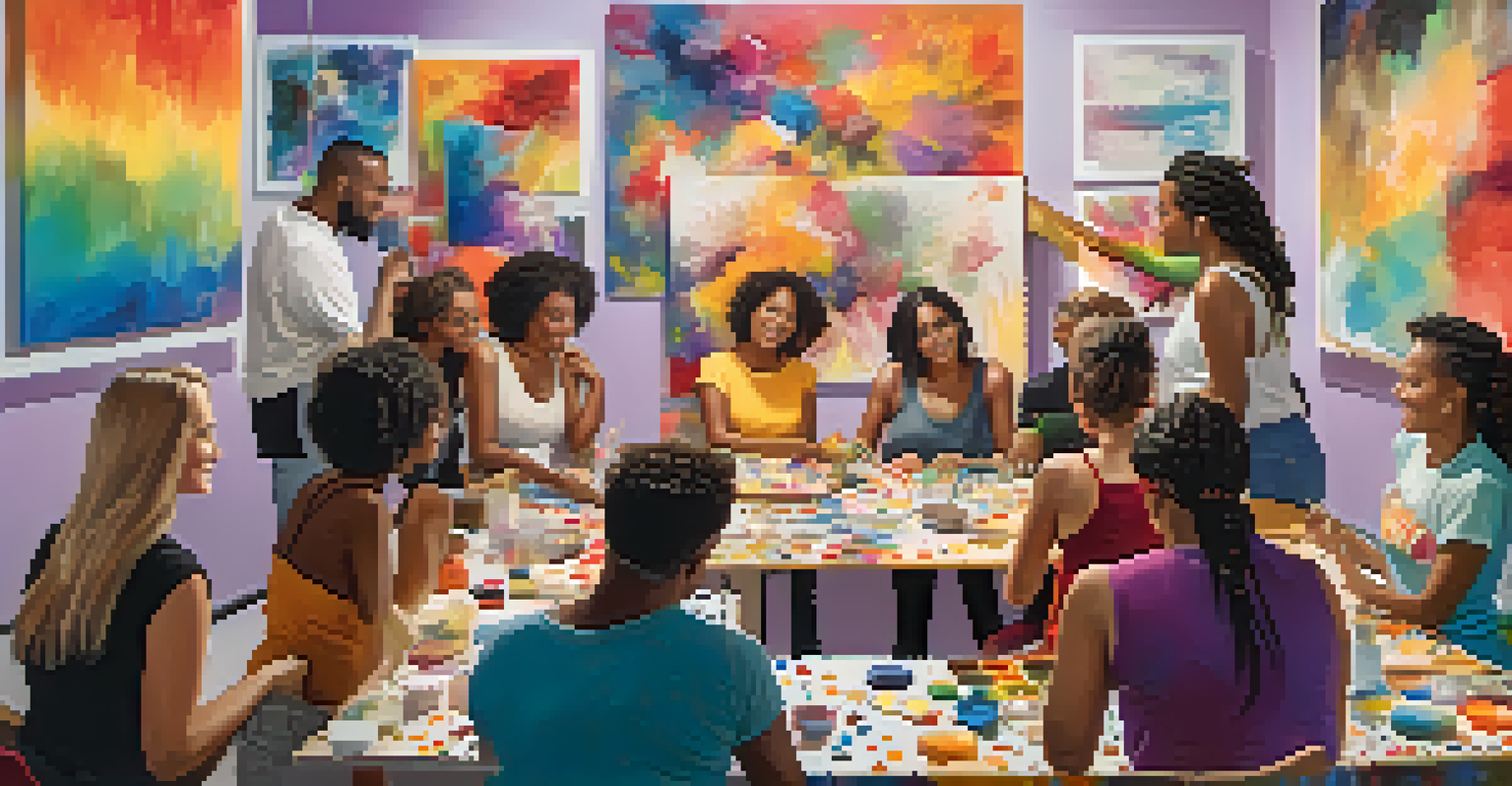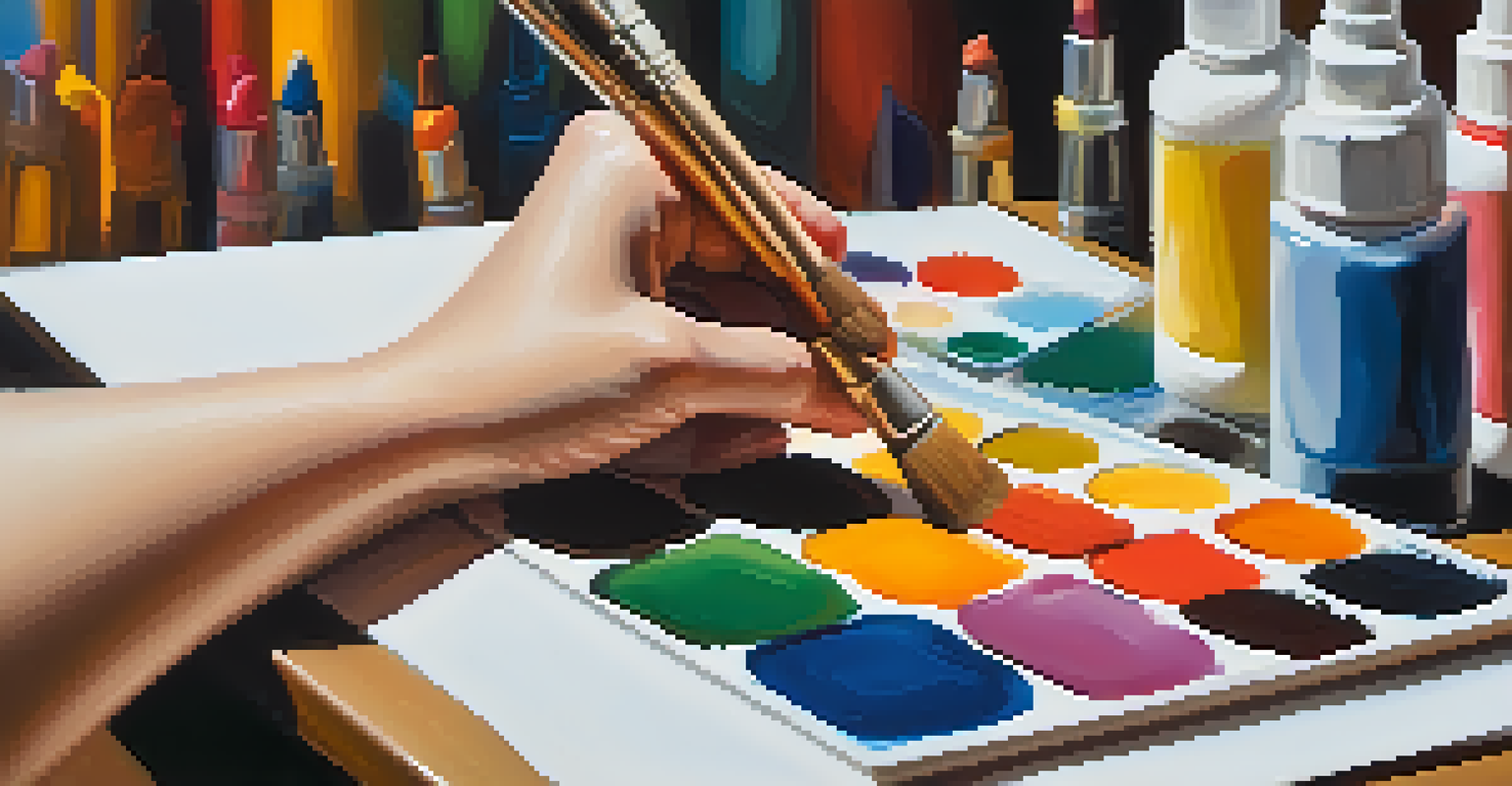Creating Safe Spaces: Art Therapy for Trauma Recovery

Understanding Trauma and Its Impact on Mental Health
Trauma can manifest in various ways, impacting individuals deeply and often invisibly. It may stem from experiences like abuse, loss, or accidents, leading to anxiety, depression, and other mental health challenges. Understanding trauma is the first step toward healing, as it allows us to recognize its effects on our thoughts, feelings, and behaviors.
Art enables us to find ourselves and lose ourselves at the same time.
Many people carry the weight of their trauma silently, which can create barriers to seeking help. This silence often stems from fear of judgment or a lack of understanding about mental health. By acknowledging trauma, we create pathways to healing and recovery, highlighting the importance of supportive environments.
Art therapy emerges as a powerful tool in this context, offering a creative outlet for individuals to express their emotions. Through artistic expression, those affected by trauma can begin to process their experiences, paving the way for healing in a safe and supportive space.
What is Art Therapy and How Does It Work?
Art therapy combines traditional therapeutic techniques with creative expression to help individuals explore their feelings and experiences. It provides a non-verbal outlet for emotions that might be difficult to articulate. By engaging in activities like painting, drawing, or sculpting, participants can express complex feelings in a tangible way.

The process of creating art can be incredibly cathartic, allowing individuals to externalize their inner struggles. This externalization can lead to moments of insight, helping them understand their trauma more clearly. Art therapy sessions are guided by trained professionals who facilitate the process, ensuring a safe environment for exploration.
Trauma's Silent Impact
Trauma can lead to mental health challenges like anxiety and depression, making understanding it crucial for healing.
Importantly, art therapy is not about creating a masterpiece; it's about the journey of creation itself. This focus on the process rather than the end result helps reduce pressure and fosters a sense of freedom, which is essential for those recovering from trauma.
Creating Safe Spaces for Healing through Art
The concept of a 'safe space' is vital in trauma recovery, as it allows individuals to feel secure while exploring their emotions. In art therapy, this safe space is created through trust, empathy, and understanding. Therapists work to establish a nurturing environment where participants can feel free to express themselves without fear of judgment.
Creativity takes courage.
Safe spaces in art therapy can take many forms, from quiet studios filled with supplies to group sessions where participants share their experiences. The atmosphere is often calm and welcoming, encouraging creativity and openness. It's essential for participants to know that their feelings and expressions are valid and respected.
By fostering this safe environment, art therapy allows individuals to confront their trauma at their own pace. This gradual approach can lead to meaningful breakthroughs, helping participants reclaim their narratives and move toward healing.
The Benefits of Art Therapy for Trauma Recovery
Art therapy offers a myriad of benefits for those on the path to recovery from trauma. One significant advantage is its ability to facilitate emotional expression in a non-verbal manner. For many, articulating feelings can be daunting, but art provides a bridge to communicate what may be too painful to say aloud.
Additionally, engaging in creative activities can reduce stress and anxiety, promoting relaxation and mindfulness. The act of creating can serve as a distraction from overwhelming emotions, allowing individuals to find solace in the moment. This therapeutic engagement encourages a sense of agency and empowerment, which is crucial for recovery.
Art Therapy as Healing
Art therapy provides a creative outlet for emotional expression, helping individuals process trauma in a supportive environment.
Moreover, art therapy can foster connection and community among participants. Group art therapy sessions create opportunities for shared experiences and support, helping individuals feel less isolated in their struggles. This sense of belonging can be a powerful catalyst for healing.
Real-Life Examples of Art Therapy in Action
There are countless inspiring stories of individuals who have benefited from art therapy in their trauma recovery journeys. For instance, a young woman who survived a traumatic event found peace through painting. Each brushstroke allowed her to express emotions she couldn't put into words, ultimately leading to a deeper understanding of her experience.
Another example is a support group for veterans who have experienced combat-related trauma. Through collaborative art projects, these veterans not only expressed their feelings but also built strong connections with one another. The shared experience of creating art together fostered a sense of camaraderie that aided in their healing process.
These real-life stories highlight the transformative power of art therapy. They remind us that healing is not a linear journey, and creative expression can play a vital role in navigating the complexities of trauma recovery.
How to Get Involved in Art Therapy Programs
If you or someone you know is interested in exploring art therapy, there are various ways to get involved. Many mental health facilities offer art therapy programs, often led by licensed art therapists trained to help individuals navigate their experiences. Researching local resources can provide options tailored to specific needs.
Community centers and non-profit organizations also frequently host art therapy workshops. These spaces often provide an inclusive environment where individuals can come together to express themselves creatively. Participating in group sessions can enhance the sense of connection and support among attendees.
Creating Safe Spaces
Establishing safe spaces in art therapy allows individuals to explore their emotions without fear of judgment, facilitating recovery.
Lastly, for those who may not have access to formal therapy, engaging in personal art projects can still be therapeutic. Setting aside time for creative expression at home can help individuals process their feelings in a safe way, underscoring that art therapy can take many forms.
The Future of Art Therapy in Trauma Recovery
As awareness of mental health issues continues to grow, so does the recognition of art therapy as an effective tool for trauma recovery. Ongoing research is expanding our understanding of how creative expression can facilitate healing. This growing body of evidence is leading to more integration of art therapy in various treatment settings.
Moreover, the digital age has opened new avenues for art therapy, allowing for online sessions that can reach individuals in remote areas. Virtual platforms can create opportunities for connection and support, making art therapy more accessible than ever before. This shift could significantly impact those who previously had limited options.

The future of art therapy is bright, with an increasing number of professionals advocating for its inclusion in holistic trauma care. As we continue to explore the intersection of art and healing, we can expect to see even more innovative approaches that empower individuals on their recovery journeys.